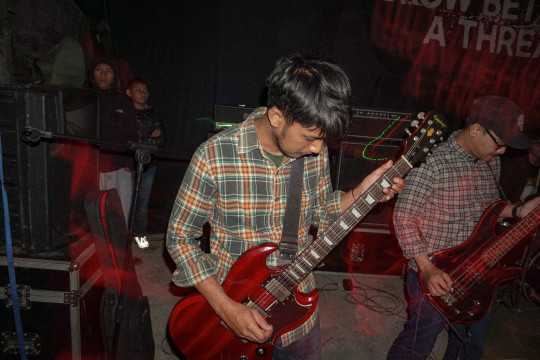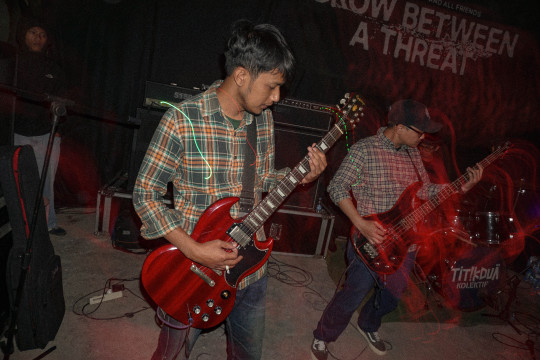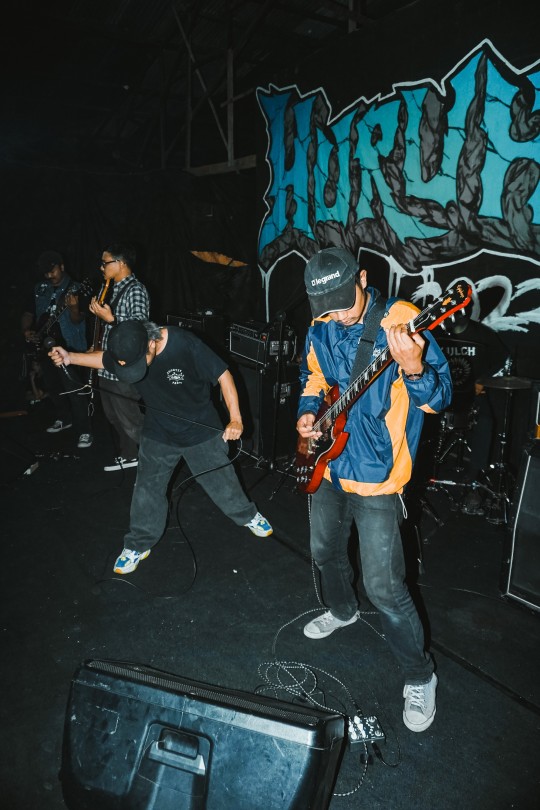#neoptera
Explore tagged Tumblr posts
Text
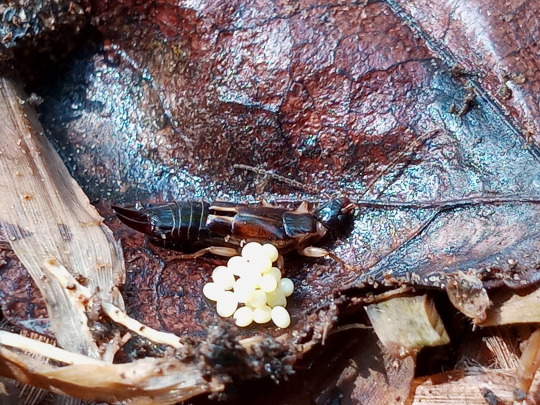
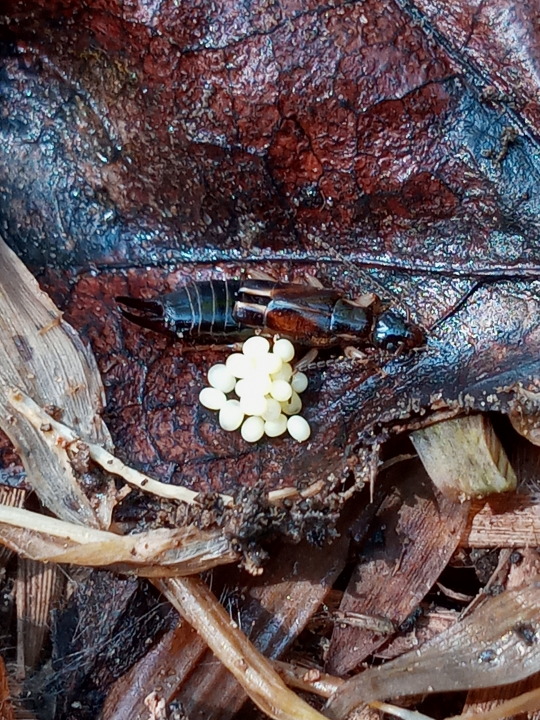
[PHOTOS TAKEN: SEPTEMBER 17TH, 2023 | Image IDs: Two photos of a black, brown, and red earwig protecting its white eggs on top of a reddish brown leaf /End IDs.]
#Insects#Insect#Bugs#Bug#Bugblr#entomology#Coleoptera#invertebrates#Inverts#Arthropods#Photos#Photo#Wasp House Sights#Earwigs#Earwig#Dermaptera#Neoptera
66 notes
·
View notes
Text
to me kingers like oh i think butterflies are nice :) i know a few of them... lepidopteras the butterflies and moths right? i like beetles and ants theyre nice... and then queenies whipping out entomologist language. starts talking to kinger and is like oh the bmsbs and leps and acronyms n shortenings n other stuff that i dont know abt and kingers nodding but so confused
what intrigues me is how kinger and queenie are written by people who clearly dont know a lot about entomology
#inspired by the fact that like#when you like entomology and then meet entomologists its very cool and they usually know how to talk about it#to ppl who dont know all the terminology#but also sometimes they just instinctually slide back into saying things in a deeply confusing way because they forget#i was gonna write hypothetical things for queenie to say to kinger but rn my brain is blanking on entomology#paleoptera and neoptera and stridulation and striation and ocelli and all the behavior shit#i guess#anyway most ppl who are really REALLY passionate in the field tend to have one specific bug they get really obsessed with. maybe a family#sometimes an order but its usually a family#so i think queenies like that#and then kinger just likes broad orders#lepidoptera and coleoptera imo#do you think he knows about honey pot ants? i hope so#queenie: oh and theres scale insects!#kinger: ok this is getting a little scary again...#circus discussion
28 notes
·
View notes
Text
Dragonflies rule (also taxonomy is confusing)
This was the week of dragonflies appearently, couldn't ID all of them, but who cares, they were all absolutely beautiful. So have yet another photo dump!








All photos taken by me in saxony, germany
I don't think I've covered this yet, but dragonflies are, like, a whole seperate order of flying insects compared to neoptera which covers a majority of insects. To get to that, we might wanna take a deepdive into the taxodermy of insects. So if you were here just for the dragonfly pics, there won't be more. This will now be a biology rant.
There are three big subclasses of insects: first, we have Archaeognatha (or jumping bristletails), very primitive and adorable. Also they can't smell anything appearently, since they lack the receptor (Orco) for it. They mostly love moisture, but have adapted to other habitats.
Then there are the better known Zygentoma, with species such as silverfish or firebrats. Very fun little critters, and they just love humidity. Some species live as nest associates like Atelura formicaria, others are synanthropes and inhabit cellars, or even ovens like the firebrat.
Both of these subclasses are wingless, so obviously the last subclass of insects are the flying insects (Pterygota). They make up 99.9% of all knows species of insects.
And this is where this all gets kinda messy, I'll try my best to somehow explain this.
So there are three big terms we gotta keep in mind; Mayflies (Ephemeroptera), Dragonflies/Damselflies (Odonata [I will refer to them as only dragonflies to make this more readable]) and Neoptera. Here in germany we took the easy path and just said "oh yeah, these are just three seperate superorders, simple", but oh no, it's not as easy as that.
It's pretty simple to differenciate mayflies from neoptera as they both lack the possibility to flex their wings over their abdomen and also resemble the other subclasses in their cerci, the tail-like appendages at the end of their abdomen.
But then dragonflies ruin everything. They too can't flex their wings over their abdomen, so one could say "hey, why not make mayflies and dragonflies one category and neoptera the other?". And you would be a fool to think that isn't the case already.
Palaeoptera is a devision of winged insects, containing dragonflies and mayflies. This is where this rant should be over, but no, there just had to be one more thing!
Metapterygota is a clade of winged insects, containing dragonflies and neoptera. This so called taxonomal branch is referring to winged insects that lack the subimago state after their larvae state. The subimago state is, of course, found in mayflies.
So in conclusion, dragonflies do not resemble neoptera in that they cannot flex their wings over their abdomen, and they do also do not resemble mayflies in that they lack the subimago state before maturing.
This conclusion is way less convoluded than the journey it took to get there, but that's just how biology is sometimes. The most tedious research makes it possible to differenciate even the most overlooked creatures from one another using very simple metrics. And I gotta say, thank god I could just read my way through a bunch of studies and articles already containing the knowledge some dedicated entomologists already got by doing research for decades. Thank you, y'all are really cool people.
16 notes
·
View notes
Text
METAZOOA HARD MODE
no drop down menu. WELCOME TO BUG WORLD

[ID: metazooa, the cladistics puzzle tree, guessed in 9. The tree splits at bilateria, two guesses under gnathostomata: horse and tiger shark. And the rest under neoptera: locust. Two under endopterygota, ladybug and mosquito. Two under aculeata: honey bee, fire ant. And two under vespinae: wasp, and finally the answer, hornet. END ID]
this too is a kind of creature to me
4 notes
·
View notes
Text
don't fucking challenge me i know every beast
NON-BEASTLY BEASTS:
Non-ParaHoxozoa:
Calcarea (Calcareous Sponges)
Hexacinellida (Glass Sponges)
Demospongiae (Demosponges)
Tentaculata (Tentacled Ctenophores)
Beroida (Non-Tentacled Ctenophores)
ParaHoxozoa, Non-Nephrozoa:
Placozoa
Anthozoa (Corals, Sea Pens, and Tube-Dwelling Anenomes)
Medusozoa (Jellyfish and Hydrozoans)
Myxozoa
Xenacoelomorpha
MINIBEASTS:
Spiralia, Non-Lophotrochozoa:
Gnathifera (Rotifers and Jaw Worms)
Mesozoa
Rouphozoa (Flatworms and Gastrotrichs)
Lophotrochozoa, Non-Mollusca:
Cycliophora
Annelida (Segmented Worms)
Nemertea (Ribbon Worms)
Bryozoa
Entoprocta
Phorodina (Horseshoe Worms)
Brachiopoda
Mollusca:
Solenogastres
Caudofoveata
Polyplacophora (Chitons)
Bivalvia (Clams, Scallops, Mussels, Oysters, Cockles, and others)
Monoplacophora
Scaphopoda (Tusk Shells)
Gastropoda (Snails, Slugs, Sea Snails, Sea Slugs, and others)
Cephalopoda (Nautiloids, Cuttlefish, Squid, and Octopi)
Ecdysozoa, Non-Arthropoda:
Loricifera
Priapulida (Penis Worms [sic])
Kinorhyncha (Mud Dragons)
Nematoda (Roundworms)
Nematomorpha (Horsehair Worms)
Tardigrada (Tardigrades)
Onchyophora (Velvet Worms)
Arthropoda, Non-Mandibulata:
Pycnogonida (Sea Spiders)
Xiphosura (Horseshoe Crabs)
Acariformes (Cheese Mites, Scabies Mites, Eyelash Mites, House Mites, and others)
Opiliones (Harvestmen)
Ricinulei (Hooded Tickspiders)
Solifugae (Camel Spiders)
Parisitiformes (Ticks, Varroa Mites, and others)
Pseudoscorpiones (Pseudoscorpions)
Scorpiones (Scorpions)
Araneae (Spiders)
Amblypigi (Whip Spiders)
Urgopygi (Whip Scorpions)
Mandibulata, Non-Insecta:
Chilopoda (Centipedes)
Symphyla (Pseudocentipedes)
Pauropoda
Diplopoda (Millipedes)
Ostracoda (Seed Shrimp)
Mystacocarida
Branchiura (Fish Lice)
Pentastomida (Tongue Worms)
Copepoda (Copepods)
Tantulocarida
Thecostraca (Barnacles and others)
Malacostraca (Crabs, Lobsters, Shrimp, Isopods, Amphipods, and others)
Cephalocarida (Horseshoe Shrimp)
Branchiopoda (Fairy Shrimp, Tadpole Shrimp, Water Fleas, and others)
Remipedia
Collembola (Springtails)
Protura
Diplura (Two-Pronged Bristletails)
Insecta, Non-Neoptera:
Archaeognatha (Jumping Bristletails)
Zygentoma (Silverfish, Firebrats, and others)
Odonatoptera (Dragonflies and Damselflies)
Ephemeroptera (Mayflies)
Neoptera, Non-Holometabola:
Zoraptera (Angel Insects)
Dermaptera (Earwigs)
Plecoptera (Stoneflies)
Orthoptera (Grasshoppers, Crickets, and others)
Mantodea (Mantises)
Blattodea (Cockroaches and Termites)
Notoptera (Ice Crawlers and Rock Crawlers)
Phasmatodea (Stick Insects and Leaf Insects)
Embioptera (Webspinners)
Psocodea (Lice)
Hemiptera (Shield Bugs, Aphids, Scale Insects, Cicadas, Planthoppers, Assassin Bugs, Water Boatmen, Pond Skaters, and others)
Thysanoptera (Thrips)
Holometabola
Hymenoptera (Sawflies, Bees, Wasps, and Ants)
Strepsiptera
Coleoptera (Beetles)
Raphidioptera (Snakeflies)
Neuroptera (Lacewings, Antlions, and others)
Megaloptera (Dobsonflies and others)
Lepidoptera (Butterflies and Moths)
Trichoptera (Caddisflies)
Diptera (Flies, Mosquitoes, Gnats, Midges, Hoverflies, and others)
Mecopteroidea (Scorpionflies, Hangingflies, and Fleas)
SLIGHTLY MORE BEASTLY BEASTS:
Ambulacraria:
Echinodermata (Starfish, Sea Urchins, Brittle Stars, Feather Stars, and others)
Hemichordata (Acorn Worms and others)
Chordata (Non-Vertebrata):
Leptocardii (Lancelets)
Tunicata (Sea Squirts, Salps, Pyrosomes, and others)
Vertebrata (Non-Eutelostomi):
Myxini (Hagfish)
Hyperoartia (Lampreys)
Elasmobranchii (Sharks, Rays, and Skates)
Holocephali (Chimaeras)
Actinopterygii (Non-Acanthomorpha):
Cladistia (Bichirs and Reedfish)
Acnipenseriformes (Paddlefish and Sturgeons)
Halecomorphi (Bowfins)
Ginglymodi (Gars)
Elopocephalai (Eels, Ladyfish, Halosaurs, and others)
Osteoglossocephala (Arapaima, Goldeye, and others)
Clupei (Herrings and Anchovies)
Apelocephali (Slickheads and others)
Anotophysa (Milkfish, Beaked Salmon, and others)
Cypriniformes (Carp, Goldfish, Loaches, Minnows, and others)
Characiformes (Characins, Pacu, Pirahnas, Tetras, and others)
Gymnotiformes (Knifefish and Electric Eels)
Siluriformes (Catfish)
Lepidogalaxii (Salamanderfish)
Protacanthopterygii (Salmon, Pike, Trout, Barreleye, and others)
Stomiati (Smelts, Marine Hatchetfish, and others)
Ateleopodia (Jellynose Fish)
Aulopa (Bombay Duck and Lancetfish)
Myctophata (Lanternfish)
Acanthomorpha:
Lampridacea (Oarfish, Opah and others)
Paracanthomorphacea (Cods, Dories, Cavefish, and others)
Polymixiacea (Beardfish)
Berycimorphaceae (Fangtooths, Pineconefishes, and others)
Holocentrimorphaceae (Soldierfish)
Ophidiiformes (Pearlfish)
Batrachoidimophara (Toadfish)
Gobiomorpharia (Seahorses, Pipefish, Tunas, Flying Gurnards, and others)
Anabantaria (Gouramis, Swamp Eels, and others)
Carangaria (Swordfish, Flatfish, Remoras, and others)
Ovalentaria (Blennies, Cichlids, Flying Fish, Mullets, and others)
Eupercaria (Anglerfish, Pufferfish, Wrasses, Sunfish, Sticklebacks, Lumpsuckers, Lionfish, Angelfish, Perches, Archerfish, Triggerfish, Bass, and others)
Sarcopterygii:
Actinistia (Coelocanths)
Dipnoi (Lungfish)
BEASTS PROPER:
Lissamphibia
Salientia (Frogs and Toads)
Caudata (Salamanders and Newts)
Gymnophiona (Caecilians)
Reptilia (Non-Aves)
Rhynchocephalia (Tuatara)
Dibamidae (Blind Skinks)
Gekkota (Geckos and Flap-Footed Lizards)
Scinciformata (Skinks and others)
Laterata (Tegus and Worm Lizards)
Anguimorpha (Slow Worms, Monitors, Gila Monster, and others)
Iguania (Anoles, Iguanas, Chameleons, and others)
Serpentes (Snakes)
Testudines (Turtles and Tortoises)
Crocodilia (Crocodiles, Gharials, Alligators, and Caiman)
Aves (Non-Passeriformes):
Palaeognathae (Ostriches, Kiwis, and others)
Galloanserae (Chickens, Ducks, and others)
Mirandornithes (Flamingos and Grebes)
Columbimorphae (Doves and others)
Otidimorphae (Cuckoos, Turacos, and Bustards)
Gruimorphae (Gulls, Cranes, Auks, and others)
Ophistocomidae (Hoatzins)
Strisores (Hummingbirds, Nightjars, Potoos, and others)
Phaethoquornithes (Boobies, Loons, Ibises, Penguins, Albatrosses, Tropicbirds, and others)
Acciptirimorphae (Vultures, Hawks, Eagles, and others)
Strigiformes (Owls)
Coraciimorphae (Kingfishers, Woodpeckers, Quetzals, and others)
Cariamiformes (Seriemas)
Falconiformes (Falcons)
Psittaciformes (Parrots)
Passeriformes:
Acanthisitti (New Zealand Wrens)
Tyranni (Overnbirds, Spadebills, Gnateaters, and others)
Menurida (Lyrebirds and others)
Climacterida (Bowerbirds and others)
Meliphagida (Honeyeaters, Bristlebirds, and others)
Orthonychida (Logrunners and others)
Corvides (Crows, Jays, Boatbills, Shriketits, Sittellas, Birds-Of-Paradise and others)
Passerides (Satinbirds, Sparrows, Larks, Tits, Oxpeckers, Thrushes, Wrens, Finches, Tanagers, Nuthatchers, and others)
Mammalia (Non-Laurasiatheria):
Monotremata (Platypus and Echidnas)
Marsupialia (Kangaroos, Opossums, Wombats, and others)
Xenarthra (Anteaters, Sloths, and others)
Athrotheria (Elephants, Manatees, Aardvarks, and others)
Lagomorpha (Rabbits, Hares and others)
Rodentia (Mice, Rats, Cavies, Beavers, Squirrels, and others)
Scandentia (Treeshrews)
Dermoptera (Colugos)
Primates (Lemurs, Marmosets, Baboons, Gibbons, Chimpanzees, and others)
Lauasiatheria (Non-Carnivora):
Eulipotyphla (Shrews, Moles, Hedgehogs, and others)
Chiroptera (Bats)
Artiodactyla (Girrafes, Deer, Whales, Pigs, Camels, and others)
Perissodactyla (Horses, Tapir, and Rhinoceros)
Pholidota (Pangolins)
Carnivora:
Viverroidea (Hyenas, Mongooses, Civets, and others)
Feloidea (Lions, Tigers, Caracals, Wildcats, Leopards, and others)
Nandiniidae (African Palm Civet)
Caninae (Wolves, Foxes, and others)
Ursidae (Bears)
Musteloidea (Skunks, Weasels, Otters, Raccoons, and others)
Pinnipedia (Seals, Sea Lions, and Walruses)

Interview questions for gym leaders
4K notes
·
View notes
Text
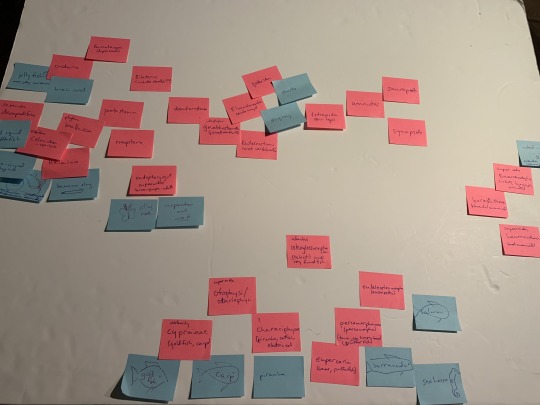
I have a normal brain.
[ID: a white foam board with pink and blue post it notes all over it. The pink notes have names of biological clades such as “Cnidaria” and “neoptera” and “euteleosteomorpha” and the blue notes have names of animals like “jellyfish” and “atlas moth” and “salmon”. The notes are meant to be arranged in a way that shows relations between different clades and the clades and the animals, but there aren’t any actual lines so it’s probably pretty incomprehensible. Think the conspiracy meme picture. End ID.]
I have been playing metazooa, a game that is intended to be played once per day, a normal amount.
1 note
·
View note
Photo
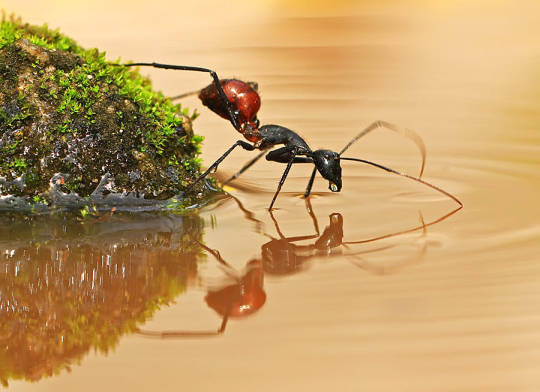
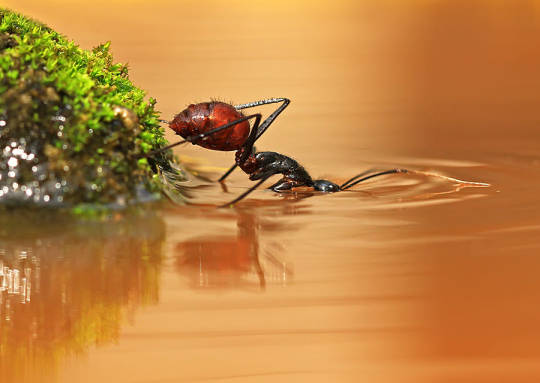
Ant (Formicidae)
Photo by shikhei goh
#unidentifiable#formicidae#formicoidea#apocrita#hymenoptera#hymenopterida#endopterygota#neoptera#pterygota#insecta#hexapoda#pancrustacea#arthropoda#ecdysozoa
2K notes
·
View notes
Text
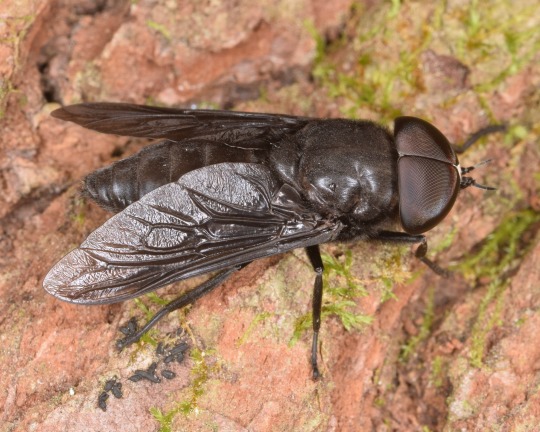
#Tabanus atratus#black horsefly#horsefly#insect#fly#animal#wildlife#nature#creative commons#tabanidae#brachycera#diptera#neoptera#pterygota#insecta#arthropoda#USA
18 notes
·
View notes
Text

This is Libelloideus coccajus, also known as owly sulphur.
Even though they look quite similar to them, owly sulphurs aren't butterflies or moths. They are owlflies, a cute family of neoptera that have attributes of both dragonflies and butterflies.
The reason i chose this specific owlfly is because it might be the most tragic little friend out there. Their antennas are perfect to sense prey when it's sunny, but once the sun fades away, so does any chance of them catching prey. If this happens, the owly sulphur does not fly away. It stays and waits for another sun. You could gently cut the blade of grass it's sitting on and pick it up, it also wont fly away.
For some, the sun will rise again. Those who aren't so lucky will starve on the very blade of grass they will hold on for the rest of their life. What a brave, yet fragile hunter.
If you live anywhere in southwest europe and happen so see an owly sulphur, be sure to take a photo, they are quite rare. And also beautiful, but that is expected since it is, indeed, an insect.
1 note
·
View note
Photo

grasshopper by norlies
#szöcske#Grünes Heupferd#Tettigonia viridissima#Heuschrecken#Orthoptera#Neuflügler#Neoptera#Fluginsek
1 note
·
View note
Photo
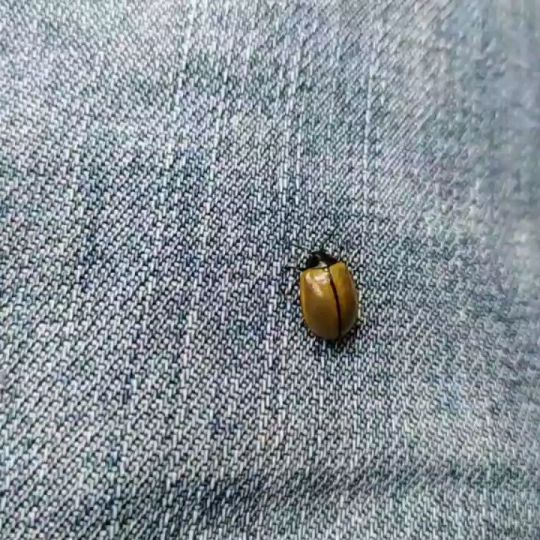
Siempre nos han encantado los insectos, su perfección, sus detalles y sus colores. #escarabajos #escarabajo #insecto #insectstagram #insectsworld #insects #insectsphotography #insects_pics #insectsofinstagram #insects_of_our_world #insects_perfection #insectsoftheworld #insectoshuila #insectos #coleóptero #coleoptero #koleos #pteron #insecta #neoptera https://www.instagram.com/p/CCOzw0dgpbd/?igshid=1r4oaeb32o2yy
#escarabajos#escarabajo#insecto#insectstagram#insectsworld#insects#insectsphotography#insects_pics#insectsofinstagram#insects_of_our_world#insects_perfection#insectsoftheworld#insectoshuila#insectos#coleóptero#coleoptero#koleos#pteron#insecta#neoptera
0 notes
Text

False tiger beetle (Stigmatium sp.)
Photo by Steve & Alison1
#unidentifiable#false tiger beetle#stigmatium#clerinae#cleridae#cleroidea#polyphaga#coleoptera#endopterygota#neoptera#insecta#hexapoda#pancrustacea#arthropoda#ecdysozoa
101 notes
·
View notes
Text

#Euclimacia#mantisfly#mantidfly#singapore#insect#animal#wildlife#nature#mantispinae#mantispidae#hemerobiiformia#neuroptera#neuropterida#neoptera#pterygota#insecta#hexapoda#arthropoda#creative commons
5 notes
·
View notes
Photo

Libelloides coccajus by ernstpluess
1 note
·
View note
